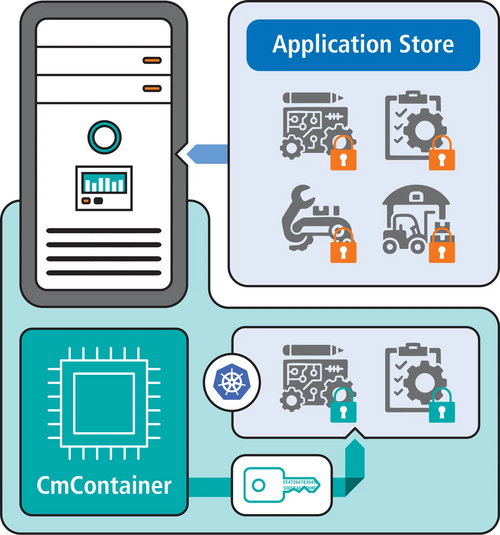
Categories: Security
Architecting the Modern Industrial Edge Systems: From Compute to Monetized Services
The industrial landscape is undergoing a fundamental architectural shift. The proliferation of sensors and intelligent machinery generates massive datasets on the factory floor, making centralized cloud processing increasingly impractical due to latency, bandwidth costs, and reliability concerns. In response, a new paradigm has emerged: edge computing, which moves computational power from distant data centers to the operational boundary where data is generated.
Modern industrial edge devices have evolved beyond simple data collectors into hardened compute hubs that perform real-time analytics and control. By processing information locally, this architecture delivers deterministic, low-latency response times essential for critical operations, protects sensitive process data, and ensures uptime even during network disruptions. This resilient on-premises platform not only lowers data storage and transfer costs but also lays the foundation for modular, on-demand software deployment – unlocking continuous innovation and measurable ROI in complex industrial environments. However, managing software a cross a distributed fleet of these devices presents a new set of challenges that requires a modern, cloud-native approach.
Part 1: A Cloud-Native Approach to Edge Software Delivery
Delivering Agility with Containerization
With significant compute power now at the edge, traditional monolithic software deployment is no longer sufficient. To keep pace with innovation, industrial systems require cloud style delivery pipelines that are both agile and reliable. Containerization technology, such as Docker, provides the answer. It works by packaging applications and their dependencies into portable, lightweight units that run predictably across heterogeneous edge devices, all atop a minimal, hardened host operating system.
This methodology offers two distinct advantages:
- Security: By isolating each service in its own container and locking down the base system, the device’s attack surface is significantly reduced, ensuring robust security.
- Consistency: The self-contained nature of containers guarantees consistent runtimes regardless of the underlying hardware.
This combination turns an industrial device into an “app-store ready” platform, able to receive new features and updates on demand, long after its initial deployment. For businesses, this model extends hardware lifecycles and shifts development from costly, one-off projects into ongoing, incremental value streams.
Orchestrating Device Fleets with Kubernetes
While containerization solves application portability, it introduces the challenge of managing software versions, rollouts, and health across hundreds or thousands of devices. To address this, enterprises are deploying production-grade Kubernetes distributions (and lightweight variants like K3s or RKE2)directly on industrial edge hardware.
These orchestration platforms automate critical fleet management tasks, from deployment, scaling, and configuration to health monitoring and automated rollbacks, across geographically dispersed sites. This ensures every node runs the correct service versions without requiring manual intervention, providing stability and consistency at scale. With scalable orchestration in place, software vendors can turn every new feature into a predictable revenue stream, while customers gain access to modular and secure edge software on demand.
Part 2: Securing and Monetizing the Edge Ecosystem
Once software can be deployed and managed effectively, the final architectural component is a robust framework for securing intellectual property (IP) and enabling modern monetization strategies. CodeMeter addresses this by weaving software licensing and protection directly into the edge stack –from the device firmware to the containerized applications and Kubernetes workflows.
Its host-based architecture runs a license server as a native service on the edge device, either integrated into the firmware via Yocto recipes or installed through standard Linux packages. This approach decouples the licensing infrastructure from the container lifecycle. Applications running inside containers can then request entitlements, such as subscriptions, feature-keys, or pay-per-use licenses, from the local service at startup and during runtime. The service transparently delivers and enforces these entitlements, guaranteeing that only authorized code executes.
Furthermore, CodeMeter provides a secure vault for cryptographic assets like private keys and certificates, provisioning each device with a tamper-resistant identity. The dual benefit is significant: IP is protected against piracy and tampering, while modern revenue models become turnkey solutions rather than complex, custom-built projects.
Business Impact for Vendors and Customers
This cohesive technical architecture delivers tangible value to both technology suppliers and industrial operators.
For Software Vendors and Device Manufacturers:
- Recurring Revenue Models: Native Kubernetes license enforcement and in-container entitlements make it straightforward to implement subscriptions, feature gating, and usage-based billing at scale. This converts irregular sales into predictable revenue streams and increases the lifetime value of each device.
- Robust IP Protection: Advanced techniques like compile-time protection, control flow obfuscation, and encrypted payloads prevent reverse engineering and unauthorized use directly at the runtime boundary, preserving competitive advantage.
- Secure Fleet Identity: On-device key storage and certificate management establish a verifiable, tamper-resistant identity for each device, which boosts platform trustworthiness.
- An “App-Store” Ecosystem: The combination of clean container packaging, integrated commerce, and protection capabilities allows manufacturers to monetize first-party features and curate third-party applications, growing platform revenue without requiring new hardware.
For Customers and Industrial Operators:
- Operational Continuity: Because licenses are stored locally, applications remain fully functional during network or cloud outages, reducing downtime in mission-critical workflows.
- On-Demand Capabilities: New features can be delivered as container updates and activated with a software license, shifting budgets from large capital expenditures to smoother operational expenses aligned with value.
- Simplified Fleet Management: Centralized license policies propagate automatically through Kubernetes, ensuring devices remain compliant as they are updated or moved, freeing teams to focus on production outcomes rather than administrative tasks.
Edge computing places decision-making intelligence where it is most needed – at the operational core. Combined with containerization, Kubernetes, and an integrated licensing framework like CodeMeter, forma complete operating model for the modern industrial ecosystem. Containerization makes edge software portable, Kubernetes makes device fleets governable, and CodeMeter makes the entire system secure, licensable, and monetizable by design. This integrated stack enables rapid delivery without disruption, IP protection without friction, and scalable business models that align value directly with capability.
KEYnote 50 - Edition Fall/Winter 2025








